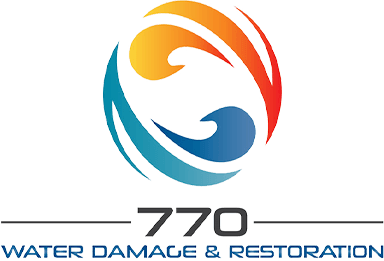Water is essential for life. We rely on it daily for drinking, cooking, cleaning, and many other activities. However, the hidden causes of water pollution and effective solutions can significantly affect this vital resource. Understanding these causes can help us find effective solutions. In this article, we’ll explore how water pollution happens, the surprising reasons behind it, and practical steps we can take to combat this issue.
Water pollution can stem from various sources, including urban runoff, which occurs when rainwater flows over surfaces and picks up pollutants. This can happen in cities where the ground is covered with concrete, leading to a decrease in natural filtration. Furthermore, transportation can also contribute to water pollution, as oil leaks from vehicles and travels into storm drains.
The effects of water pollution can be devastating, impacting both human health and the environment. By addressing water pollution and effective solutions, we can foster a healthier environment.

The Unseen Threats to Our Water Supply
In addition, the impact of climate change cannot be ignored. Increased rainfall and flooding can lead to higher levels of runoff, overwhelming sewage systems and causing untreated waste to enter water bodies. Moreover, rising temperatures can promote harmful algal blooms, which have detrimental effects on aquatic ecosystems and human health.
The hidden causes of water pollution and effective solutions need urgent attention for sustainable living. Pesticides and herbicides play a crucial role in modern agriculture by protecting crops from pests and weeds, but their use must be managed carefully to minimize environmental impact.
Imagine you’re enjoying a peaceful day by the lake, the sun glistening on the water’s surface. Suddenly, you notice a disturbing sight: trash floating nearby, and a strange chemical smell in the air. This scenario highlights a core issue—water pollution is often invisible until it’s too late. Here are a few hidden causes that contribute to water pollution:
- Agricultural Runoff: Farmers use fertilizers and pesticides to boost crop yields. When it rains, these chemicals wash off fields into nearby streams and rivers, contaminating water supplies.
- Industrial Discharges: Factories sometimes discharge toxic waste into rivers and lakes. While regulations exist, not all industries comply fully, allowing harmful substances to seep into our water sources.
- Sewage and Wastewater: Not all sewage treatment facilities are equipped to handle the volume of waste they receive. When systems overflow, untreated waste can flow directly into water bodies.
- Plastic Waste: Millions of tons of plastic end up in the oceans every year. This doesn’t just pollute the water; it also harms marine life, which can affect food chains and even human health.
Practical Solutions to Combat Water Pollution and Effective Solutions
Community involvement is crucial. One effective solution is to create educational programs that inform the public about the importance of maintaining clean water sources. These programs can include workshops, informational pamphlets, and partnerships with local schools to teach children about environmental stewardship.
Now that we’ve explored some of the hidden dangers, let’s look at ways to address water pollution and effective solutions that everyone can contribute to.
- Adopting Sustainable Farming Practices
- Use organic fertilizers and pest control methods.
- Implement crop rotation to maintain soil health and reduce chemical reliance.
- Regulating Industrial Waste
- Advocate for stricter regulations on emissions and waste management.
- Support companies committed to sustainable practices.
- Enhancing Waste Treatment Systems
- Municipalities should invest in improving sewage treatment facilities.
- Encourage the use of green technologies that recycle water.
- Reducing Plastic Use
- Opt for reusable bags, bottles, and containers to minimize plastic waste.
- Participate in community clean-up efforts to remove plastic from waterways.
Implementing effective water pollution solutions is essential for protecting our environment and public health. These initiatives serve as water pollution and effective solutions for other communities to follow.
Real-World Example: A Community’s Fight Against Water Pollution
In conclusion, tackling water pollution requires a collaborative effort. By sharing knowledge, advocating for sustainable practices, and supporting policies that protect our water sources, we can create a cleaner environment for all. Remember, every action counts!
Moreover, implementing rain gardens in residential areas can help absorb excess rainfall and filter pollutants before they reach the drainage system. This natural solution not only aids in water quality improvement but also enhances local biodiversity by providing habitat for wildlife.
Let’s take a look at the town of Clearwater. Facing significant water pollution issues due to nearby agricultural runoff and industrial discharges, the community banded together. They started a movement called “Clearwater Wellness,” focused on educating residents about sustainable practices.
Such actions demonstrate how water pollution and effective solutions can lead to community improvements.
Their efforts included:
Each individual has a role in combating water pollution and effective solutions that protect our resources.
- Hosting workshops on organic gardening.
- Encouraging local businesses to adopt eco-friendly practices.
- Organizing regular clean-up events along the shores of their local lake.
Over time, thanks to vigilant community efforts, Clearwater noticed a significant improvement in water quality. The transparency and cleanliness of their lake returned, attracting more visitors and providing a safe recreational space for families.
The Role of Individuals in Preventing Water Pollution
As individuals, we might feel powerless in the face of such a massive issue. However, every small action counts in the fight against water pollution. Here’s how you can contribute:
- Educate Yourself and Others: Learn about water pollution and share information with your family and friends. The more people know, the better we can work together.
- Support Local Clean-Up Initiatives: Many organizations host clean-up events that welcome volunteers. Getting involved is a great way to make a direct impact.
- Advocate for Policy Change: Reach out to your local governmental representatives, urging them to prioritize water protection. Support policies that promote clean water initiatives.
- Practice Responsible Disposal: Properly dispose of hazardous materials, like batteries and chemicals. Never throw these items down the drain or into water bodies.
Our collective actions against water pollution and effective solutions can reshape our future.
Ultimately, water pollution and effective solutions hinge on our commitment to change.
Conclusion: A Collective Responsibility
Additionally, participating in local water quality monitoring programs allows individuals to contribute to a collective understanding of water health in their area, helping to identify pollution sources and mobilize community responses.
We address common questions about water pollution and effective solutions to inform our readers.
Water pollution is a complex issue driven by many hidden causes, from agricultural practices to industrial waste. Recognizing these causes empowers us to implement effective solutions. By making conscious choices and participating in community efforts, we can protect our invaluable water resources for future generations.
At 770 Water Damage & Restoration, we believe in fostering a cleaner environment. Together, with consistent efforts and awareness, ensure a healthier planet. Engage in this mission and help us create a wave of positive change.
A Final Thought
With the right knowledge and active participation, combating water pollution doesn’t feel like a burden—it becomes a shared adventure. Let’s dive in together and make our waters cleaner and safer, one solution at a time. Remember, water pollution and effective solutions begin with you!
Common Questions on Water Pollution and Our Restoration Services
What causes water pollution?
Water pollution is mainly caused by agricultural runoff, industrial waste, sewage overflow, and plastic waste.
How can I detect water pollution?
Look for signs like water discoloration, unusual odors, and debris. Local water quality reports can also provide information.
How can I reduce water pollution?
Use fewer chemicals, join local clean-up events, and minimize plastic usage. Proper water damage remediation by 770 Water Damage & Restoration is also essential.
How does water damage restoration prevent pollution?
Restoration prevents contamination by eliminating mold and addressing water damage, keeping your property and local water sources safe.
What services does 770 Water Damage & Restoration offer?
We provide water damage mitigation, mold remediation, sewage cleanup, and emergency water extraction services to ensure a safe, healthy environment.


